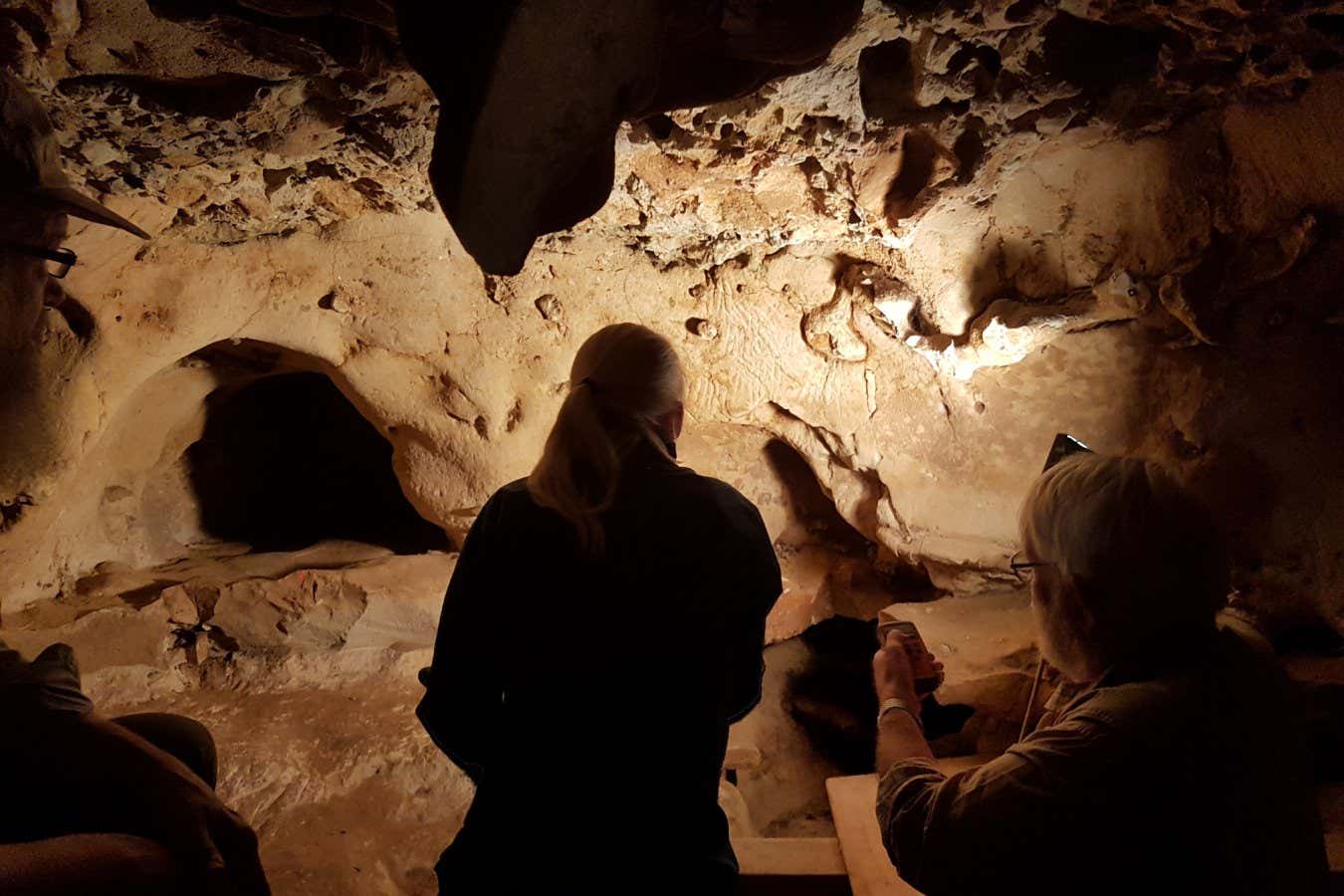Symbols have been found carved on the walls of a cave in France that was inhabited by Neanderthals before being sealed off at least 57,000 years ago
By Michael Marshall
21 June 2023
Researchers inspect markings made by Neanderthals on the wall of La Roche-Cotard cave in France
Kristina Thomsen, CC-BY 4.0
Neanderthals used their fingers to carve symbols into the wall of a cave in France at least 57,000 years ago. The engravings are some of the oldest known examples of Neanderthal art and are possibly the very oldest.
“The engravings could only have been made by Neanderthals,” says Jean-Claude Marquet at the University of Tours in France, because they are the only hominins to have left artefacts in the cave and the entrance was sealed by sediments until modern times.
La Roche-Cotard cave is situated in the Loire valley and consists of four consecutive chambers. It has been excavated on and off since 1912, with the most recent round beginning in 2008.
Advertisement
Neanderthals lived in the front chamber and entered the second and third, says Marquet. Excavations have unearthed many distinctive “Mousterian” stone tools, which are associated with Neanderthals and not with Homo sapiens.
The walls of the third chamber, called the pillar chamber, are made of tuff, a soft rock primarily formed from solidified volcanic ash. Here, the team found eight panels covered with markings. These include a great many lines traced by fingers: often straight lines, but sometimes also circles or ovals. Some seem to be arranged in larger patterns. One panel has a cluster of more than 100 dots. A subgroup of the engravings was made with tools like flint, antler and wood rather than with fingertips.
It isn’t clear whether the engravings “represent symbolic thinking”, Marquet and his colleagues write in their paper. “Interpretation and meaning are very complicated [for us] to imagine,” says Marquet.
